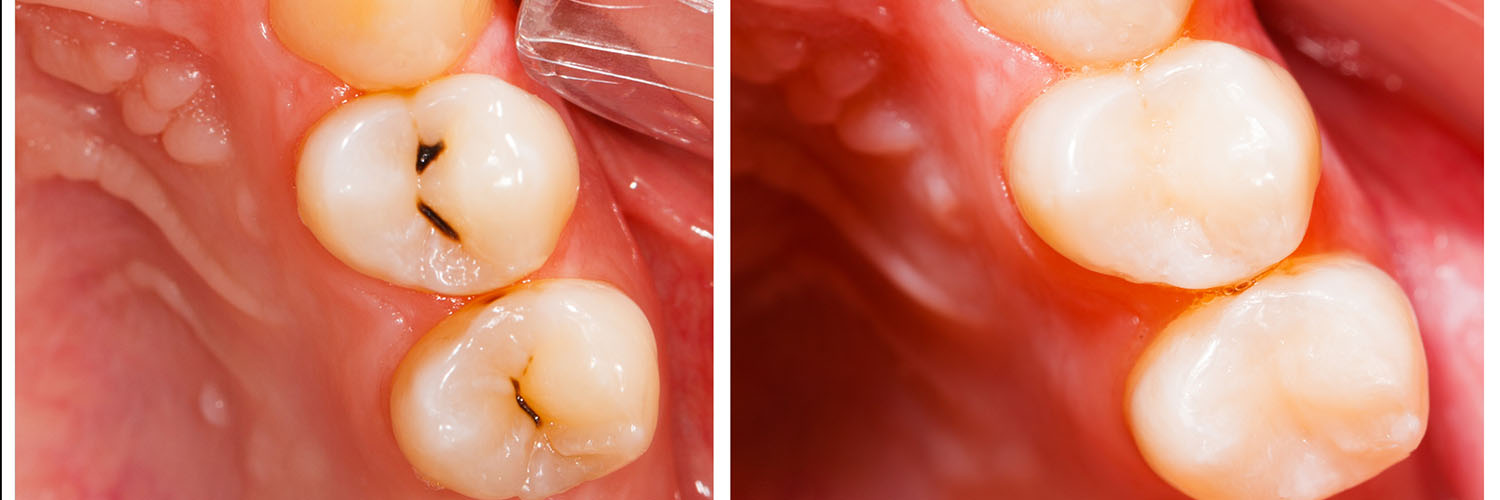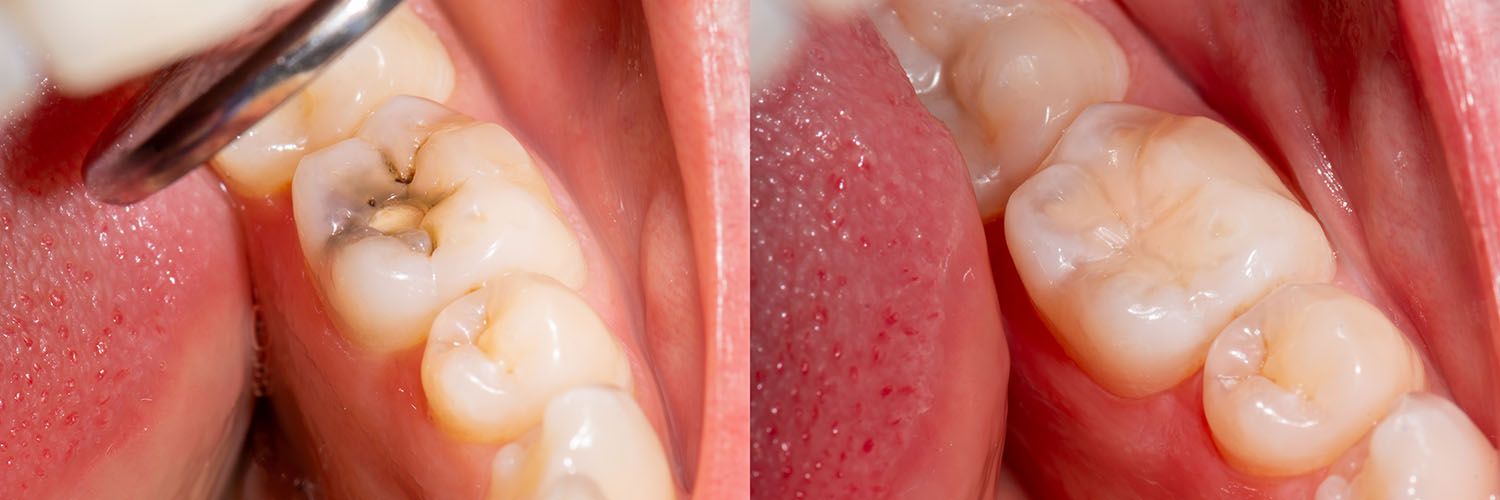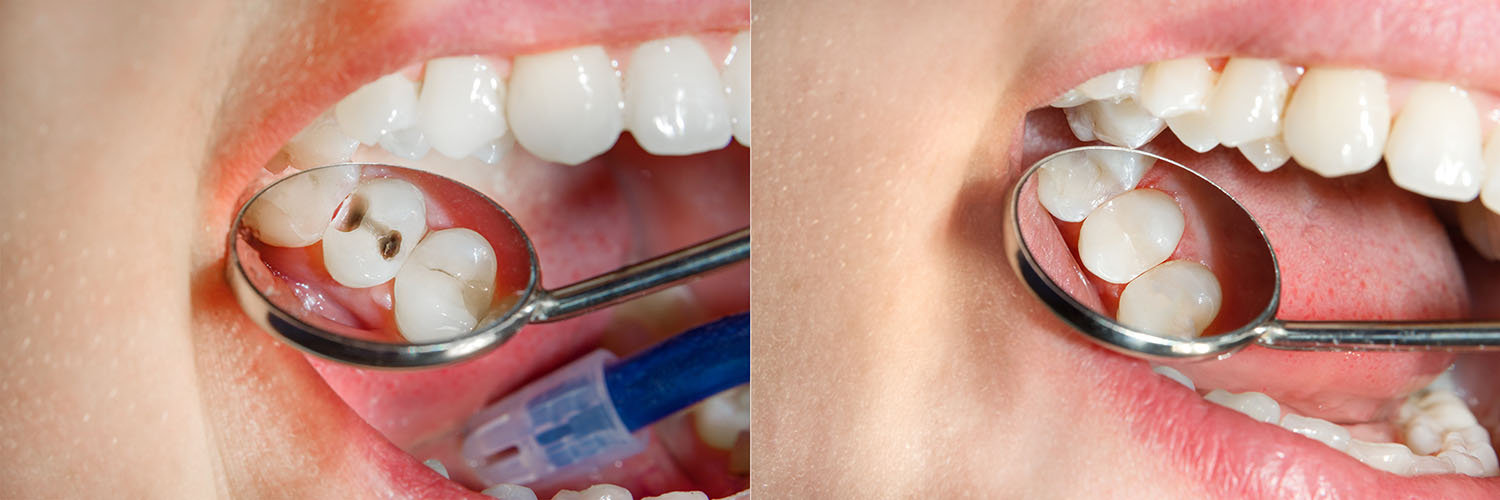New Patients
Existing Patients
New Patients
Existing Patients
New Patients
Existing Patients
New Patients
Existing Patients
New Patients
Existing Patients
New Patients
Existing Patients
New Patients
Existing Patients
New Patients
Existing Patients

A dental filling does more than patch a cavity — it rebuilds a tooth’s shape, restores chewing ability, and protects vulnerable tooth structure from further damage. When decay or wear has weakened enamel and dentin, a carefully placed filling seals the area, preventing bacteria from progressing deeper into the tooth and helping you keep your natural tooth for longer.
Modern fillings are designed to be both functional and discreet. Advances in dental materials allow restorations to match the color and translucency of your teeth while providing the strength needed to withstand daily biting forces. The goal is always to return comfort and function with the least amount of healthy tooth removal.
At Artistic Family Dental, we prioritize precise diagnostics and conservative treatment planning so that each filling addresses the immediate problem while supporting long-term oral health. We’ll explain the options that best suit your tooth’s condition and recommend the material and technique that balance durability, appearance, and preservation of healthy tooth structure.
Humans have sought ways to treat tooth damage for millennia. Early attempts at filling or stabilizing teeth appear in archaeological records, reflecting a long-standing need for restorative care. Over time, dental materials evolved from rudimentary packing substances to sophisticated alloys and resins engineered for clinical reliability.
The 19th and 20th centuries introduced metal-based restoratives such as gold and amalgam, which were prized for their longevity and workability. In recent decades, innovation has shifted toward mercury-free, tooth-colored materials that emphasize conservation of healthy tissue and a natural appearance. Today’s range of options gives clinicians flexibility to match treatment to each patient’s priorities.
Our philosophy centers on minimally invasive dentistry: remove only the diseased or weakened tissue and restore the tooth in a way that preserves strength and aesthetics. We combine careful diagnosis, precise preparation, and up-to-date materials to create restorations that integrate with your smile and function comfortably for years.

Not all fillings are the same. Material choice affects appearance, wear resistance, and how much tooth structure needs to be removed for placement. Your dentist will consider the size and location of the cavity, bite forces, aesthetic goals, and the condition of the remaining tooth when recommending a material.
While some materials excel in durability, others prioritize cosmetic blending with surrounding teeth. Knowing the strengths and limitations of each option helps you and your clinician choose a restoration that aligns with both functional needs and visual expectations.
Below is a concise overview of the commonly used restorative materials to help you understand their roles in modern care.
Composite resin fillings are made from a blend of durable polymers and finely ground glass particles. They are matched to your natural tooth shade, making them a popular choice for visible areas. Composites bond to the tooth surface, which can help strengthen remaining structure and allow for more conservative preparation than some traditional materials.
Because they are placed in layers and cured in the mouth, composites give the clinician control over shape and contour for a lifelike result. Proper care and routine dental checkups help manage staining and wear over time.
Amalgam has a long history as a reliable restorative material due to its strength and proven wear resistance. While its metallic appearance makes it less desirable for front teeth, it remains a practical solution for large restorations in back teeth where high chewing forces are present.
Glass ionomer materials bond chemically to tooth structure and gradually release fluoride, which can help protect nearby enamel. They are often chosen for areas where moisture control is difficult, for pediatric restorations, or as a transitional material when a longer-term restoration will be placed later.
Ceramic restorations are fabricated outside the mouth to create precise shapes that match tooth anatomy and color. When bonded in place, ceramic inlays and onlays are highly wear-resistant and provide excellent aesthetics for larger restorations that would otherwise require a crown.
Gold remains a durable and biocompatible material with a long clinical track record. Although not commonly chosen for aesthetic reasons in visible areas, gold restorations are still valued for their fit, longevity, and gentle interaction with opposing teeth.

Treating a cavity begins with a careful exam and, when needed, radiographs or intraoral imaging to define the extent of decay. Once the decision to restore the tooth is made, the clinician plans a conservative preparation that removes diseased tissue while keeping as much healthy tooth as possible.
Most routine fillings are placed during a single visit under local anesthesia. You can expect the area to be numbed so you feel little to no discomfort. The dentist will remove the decayed material using rotary instruments, lasers, or air abrasion, then clean and prepare the tooth to accept the chosen restoration.
Placement techniques vary by material. Composite fillings are applied incrementally and cured with a light to ensure structural integrity, while many other materials may be condensed or cemented into place. The restoration is trimmed, polished, and adjusted to ensure a comfortable bite and natural feel.
Following placement, it’s normal to notice temporary sensitivity as the tooth adjusts. This typically fades over days to weeks. Until any numbness from anesthesia resolves, avoid hot drinks and be careful not to bite the cheek, lip, or tongue in the treated area.
Good oral hygiene and regular professional exams are the best ways to maintain restorations. Brushing twice daily, flossing, and attending routine cleanings help prevent new decay at the margins of fillings. If you grind your teeth or place unusual stress on restorations, discuss protective measures such as a night guard with your clinician.
Fillings do eventually wear, chip, or develop marginal breakdown over time. Keeping an eye on changes in how a tooth feels or chews, and having periodic evaluations, allows your dental team to address small issues before they become more extensive treatments.
Protect the treated area while numb
Refrain from chewing until normal sensation returns to avoid accidental injury.
Expect brief sensitivity
Temperature or pressure sensitivity is common and usually resolves without intervention; persistent pain warrants a follow-up visit.
Care and monitoring
Routine dental care supports the longevity of restorations; your dentist will recommend individualized recall intervals and maintenance.

Fillings are a cornerstone of conservative dental care — they stop decay, restore function, and, with modern materials, preserve the appearance of your smile. When decay is detected early, a filling can often be completed comfortably and efficiently, preventing more extensive procedures later on.
If you have questions about a sensitive tooth, a visible dark spot, or a change in how your teeth feel when you chew, schedule an evaluation so the issue can be assessed before it progresses. Our team is committed to explaining your options and recommending a treatment plan tailored to your goals and oral health needs.
Contact us for more information or to arrange an appointment — we’re here to help you maintain a healthy, confident smile.

If the pleasure of eating a delicious bowl of ice cream or sipping a soothing cup of tea gets overshadowed by dental pain that makes you wince; it's time to contact our office. As skilled providers of care, we'll determine what's causing your discomfort and perform the treatment required to alleviate your symptoms and get you back on the road to oral health.
Cavities develop because of an infectious process that causes progressive damage to tooth structure. Despite starting as a pinpoint defect on the outermost enamel layer of your tooth, untreated dental decay progressively compromises more and more healthy tooth structure as it works its way to the inner layers of your tooth.
Yes, you can still develop tooth decay on other surfaces of the tooth, around the margins of an old filling, or in fewer instances, recurrent decay underneath it. For this reason, it's essential to maintain excellent oral hygiene, a diet low in sugary beverages and sweets, and be sure to visit our office for routine checkups and care. While tooth decay is second only to the common cold in frequency, it's almost entirely preventable.
We value the time and comfort of our patients. If cavities are located on adjacent teeth, or in the same section of your smile, it may be possible to treat more than one tooth during your visit. However, how much is done each visit depends on several factors. We keep our patients well informed and tailor every treatment plan and visit to address their unique needs.
Addressing concerns on the presence of elemental mercury in silver fillings, the American Dental Association (ADA), The Center for Disease Control and Prevention (CDC), the FDA, and the World Health Organization have all stated that amalgam restorations do not pose a risk to health. However, individuals with allergies or sensitivities to the metals in dental amalgam are advised to pursue other restorative options.
Dental fillings are performed under local anesthesia to help ensure your comfort throughout the entire procedure. The involved tooth remains completely numb for the extent of your visit. Within one or two hours after the procedure is completed, the local anesthetic will gradually wear off, and normal sensations return.
A tooth-colored composite filling is fully hardened and set by the end of your visit. However, we may advise you to wait a couple of hours until the local anesthesia has completely worn off. This advice is to help ensure you don't accidentally bite your lip, cheek, or tongue while still numb.
The lifetime of a dental filling varies depending on the type of material used. While popular dental materials can last a decade or more with proper care, they can degrade over time, wear down, or even break. When this happens, you may experience some tooth sensitivity, a jagged edge, or a loose or dislodged piece of filling material. Whatever the case may be, it's essential to get the filling replaced before the tooth sustains further damage or other consequences arise. Beyond taking good care of your smile to help ensure the longevity of your fillings, our office regularly checks the status of your existing fillings as part of a routine checkup exam.
Dental fillings are an essential investment that serves to preserve and protect the health of your smile. With that said, how much a filling costs depends on the number of surfaces of the tooth involved and the filling material that is used. Amalgam restorations are the most economical. While tooth-colored composite fillings have a slightly higher cost, they offer the added benefits of being metal-free and much more aesthetically pleasing. Ceramic fillings, inlays, and onlays are more expensive than the preceding options but provide outstanding, long-lasting, and natural-looking results.
Dental insurances typically cover the cost of dental fillings. While we work with you to maximize your insurance benefits, there may still be an out-of-pocket expense. At the office of Artistic Family Dental, we strive to help you begin care without any additional financial stress or delay.
A dental filling is a restorative material used to repair a tooth damaged by decay or a minor fracture. It replaces lost tooth structure, restores chewing function, and seals the area to prevent bacteria from progressing deeper into the tooth. Fillings allow many patients to keep their natural tooth rather than move to more extensive treatment.
Modern fillings come in materials that balance strength and cosmetics, enabling restorations that blend with surrounding teeth while withstanding normal bite forces. Placement focuses on removing only diseased tissue and preserving healthy enamel and dentin whenever possible. Routine dental exams and imaging help determine when a filling is the appropriate, conservative option.
A tooth usually needs a filling when decay has softened or removed enough tooth structure to threaten function or allow bacterial progression. Early signs include visible dark spots, rough edges, and sensitivity to sweets or temperature changes. Dentists confirm the extent of decay with visual exam and radiographs or intraoral imaging before recommending restoration.
If decay is treated promptly with a filling, the tooth can often be preserved without the need for more invasive procedures. Left untreated, decay can progress to involve deeper layers of the tooth and may require root canal therapy or extraction. Schedule an evaluation if you notice changes in color, shape, or comfort so the issue can be assessed and managed early.
Common materials include tooth-colored composite resins, traditional amalgam, glass ionomer cements, ceramic inlays or onlays, and gold restorations. Each option offers a different balance of appearance, wear resistance, bonding characteristics, and clinical indications. Some materials are chosen for their aesthetic match while others are selected for strength in high‑stress areas.
At Artistic Family Dental, clinicians evaluate cavity size, location, bite forces, and aesthetic goals to recommend the material that best suits each tooth. Where moisture control or fluoride release is important, glass ionomer may be favored, while ceramic or gold can be preferred for large, long‑lasting restorations. Your dentist will explain the reasons for a recommendation and how that choice supports both function and appearance.
Placing a composite filling typically begins with local anesthesia to ensure comfort followed by careful removal of decay and preparation of the cavity. The tooth surface is treated and a bonding agent is applied so the composite can adhere to the remaining tooth structure. Composite material is placed in small increments and cured with a light to build proper shape and strength.
After placement the dentist trims and polishes the restoration and checks your bite to ensure a natural feel when chewing. Because composites bond to the tooth, they often require less removal of healthy tooth tissue than some alternatives. With good oral hygiene and routine dental visits, composite fillings can provide durable and attractive results, though they may show gradual staining over many years.
Most patients experience minimal discomfort during a filling because the area is numbed with local anesthesia prior to treatment. Modern techniques and gentle care make the procedure tolerable for routine restorations. If anxiety is a concern, discuss options such as nitrous oxide with your dental team to improve comfort.
It is common to have temporary sensitivity to temperature or pressure for a few days to weeks as the tooth settles after restoration. Persistent sharp pain, swelling, or prolonged sensitivity beyond a few weeks should prompt a follow‑up appointment. Your dentist can evaluate whether additional treatment, bite adjustment, or other care is needed to resolve the issue.
The lifespan of a filling depends on the material, size of the restoration, bite forces, and oral hygiene habits, with many lasting several years to more than a decade. Amalgam and ceramic tend to be more wear‑resistant while composites offer better aesthetics but may require more frequent monitoring. Regular dental checkups and radiographs allow your dentist to spot wear or marginal breakdown early.
To extend the life of restorations, maintain thorough brushing and flossing, avoid chewing very hard objects, and address habits such as teeth grinding with a night guard if recommended. Watch for changes in how a tooth feels when you bite or chew and report any chips, roughness, or sensitivity to your dental team. Timely repairs or replacements of small problems often prevent more extensive treatment later.
Small chips or rough edges can sometimes be repaired quickly by adding composite material or smoothing the restoration to restore function and comfort. When the damage is more extensive, the filling may need to be removed and replaced with a new restoration. Your dentist will assess whether repair, replacement, or a more robust indirect restoration like an inlay or onlay is the best course.
An evaluation includes checking the integrity of the margins, underlying tooth structure, and any signs of recurrent decay. If recurrent decay is present or the tooth is weakened, options that provide greater coverage and strength may be recommended. Keeping routine appointments helps catch minor issues early, when conservative repairs are more likely to be successful.
Advances in composite materials and bonding techniques have made tooth‑colored fillings suitable for many posterior teeth, especially for small to moderate cavities. For very large restorations or teeth under heavy chewing forces, an indirect restoration such as a ceramic inlay, onlay, or crown may offer greater longevity. The choice depends on the amount of remaining tooth, the location of the cavity, and individual bite dynamics.
Dentists weigh aesthetic goals alongside mechanical demands to choose the most appropriate restoration for back teeth. In situations where direct composite may be at risk of premature wear, an indirect ceramic option can preserve tooth structure while providing enhanced strength. Your clinician will explain the trade‑offs so you can make an informed decision that balances durability and appearance.
After a filling, avoid chewing on the treated side until the anesthesia has worn off to prevent accidental biting of the cheek or tongue. Start with softer foods for the remainder of the day and practice gentle brushing around the restoration as sensitivity permits. Over‑the‑counter pain relievers and desensitizing toothpaste can help manage routine post‑operative sensitivity.
If you experience persistent severe pain, swelling, a high fever, or an unexpected change in bite, contact your dental office promptly for an evaluation. A follow‑up visit allows the dentist to check the restoration for high spots, marginal gaps, or signs of infection that may require treatment. Routine recall appointments are the best way to monitor fillings and address small concerns before they become larger problems.
The decision is based on a combination of clinical factors including the size and location of the cavity, the condition of the surrounding tooth structure, your bite, and any history of tooth sensitivity or allergies. Your aesthetic priorities and daily habits, such as chewing style and grinding, also play a role in material selection. The dentist uses diagnostic tools and clinical judgment to recommend the option that best preserves tooth health and long‑term function.
At Artistic Family Dental, we take time to explain the benefits and limitations of each restorative approach so patients can make an informed choice aligned with their goals. We also outline follow‑up care and monitoring so you understand how the restoration will be maintained over time. If you have questions about a specific tooth or recent symptoms, schedule an evaluation so the team can review appropriate treatment options.

Ready to schedule your next appointment or learn more about our services?
Our friendly team is here to make it easy. Whether you’d like to call, email, or use our convenient online form, we’ll help you find the right time and answer any questions you have. Don’t wait to take the next step toward a healthier, more confident smile—contact Artistic Family Dental today and experience the difference genuine, personalized care can make.